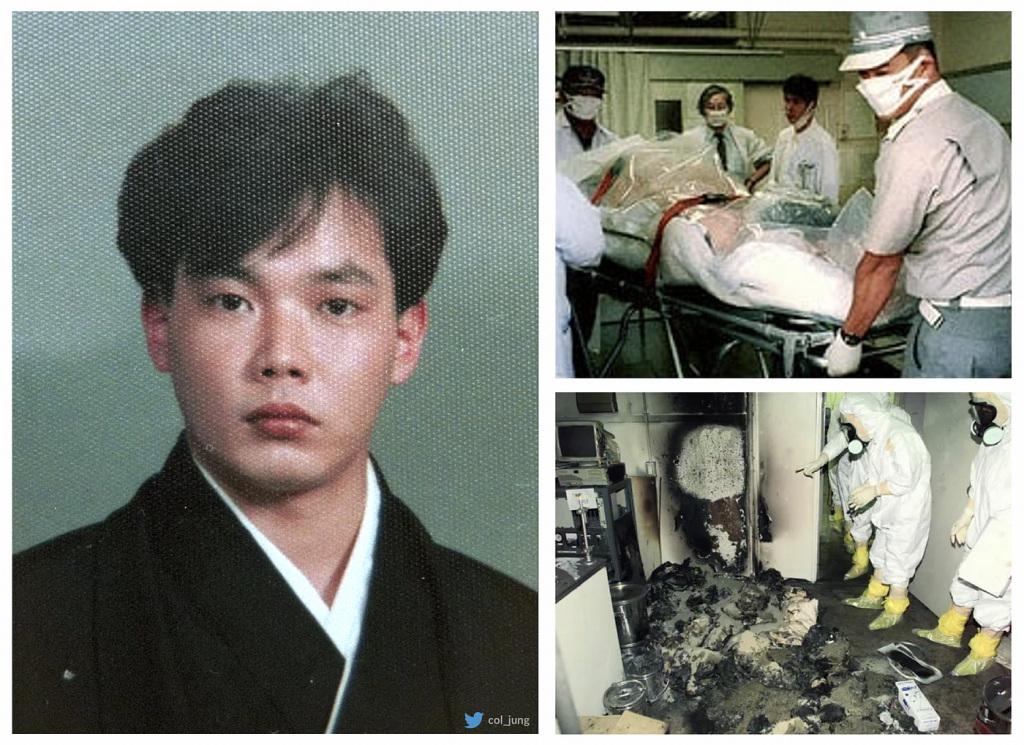The Shocking Introduction
When Hisashi Ouchi entered the University of Tokyo Hospital in 1999, little did the doctors know they were witnessing the aftermath of the highest recorded human radiation exposure. The 35-year-old nuclear technician, engulfed by Gamma rays, faced an unimaginable fate—crying blood as his skin melted.
The Catastrophic Nuclear Accident
The disaster unfolded on Sept. 30, 1999, at the Tokaimura nuclear power plant. In a rush to meet deadlines, Hisashi Ouchi and colleagues, untrained in the process, manually mixed uranium, causing a critical mass explosion. Evacuations ensued, but Ouchi’s ordeal had just commenced.
Hisashi Ouchi’s Employment at Tokaimura

Born in 1965, Hisashi Ouchi entered the nuclear sector amid Japan’s energy revolution. The Tokaimura plant, a hub of nuclear activity, marked a pivotal era for Japan, relying on nuclear power to meet energy demands.
Experimentation Gone Awry
In 1999, officials sought shortcuts to expedite the uranium conversion process. Unaware of the consequences, Ouchi and team, attempting a shortcut, triggered a nuclear chain reaction, sealing their fates.
The Unprecedented Radiation Exposure
Taken to the National Institute of Radiological Sciences, Ouchi’s exposure was unparalleled. Exposed to 17 sieverts, he faced immediate pain, breathing difficulty, and blood-filled eyes. Lack of white blood cells left him vulnerable, leading to his transfer to the University of Tokyo Hospital.
Experimental Treatments and Heartbreaking Outcome
His first week involved skin grafts and transfusions. Experimental stem cell transplants from his sister offered a glimmer of hope, but DNA destruction and organ failure persisted. Despite Ouchi’s plea to end the experiments, his family insisted, leading to a prolonged, painful 83 days.
The Grim Aftermath
The Tokaimura disaster forced 310,000 villagers indoors, with 10,000 checked for radiation. Ouchi’s colleague, Masato Shinohara, fought for seven months but succumbed. Supervisor Yutaka Yokokawa, facing charges, survived. The plant operated until the 2011 Tōhoku earthquake.
FAQs
- What caused the Tokaimura nuclear disaster? The disaster resulted from unsafe practices, including manual mixing of uranium, at the Tokaimura plant in 1999.
- How did Hisashi Ouchi’s exposure compare to others? Ouchi’s exposure to 17 sieverts was the highest recorded, leading to catastrophic consequences.
- Were there any survivors among Ouchi’s colleagues? Supervisor Yutaka Yokokawa survived, facing criminal charges, while colleague Masato Shinohara tragically passed away.
- Did the Tokaimura plant continue operations after the disaster? Yes, the plant operated under a different company until the 2011 Tōhoku earthquake forced an automatic shutdown.
- What were the long-term effects of the Tokaimura disaster? The disaster left a lasting impact on the affected individuals, with health issues persisting for years.


